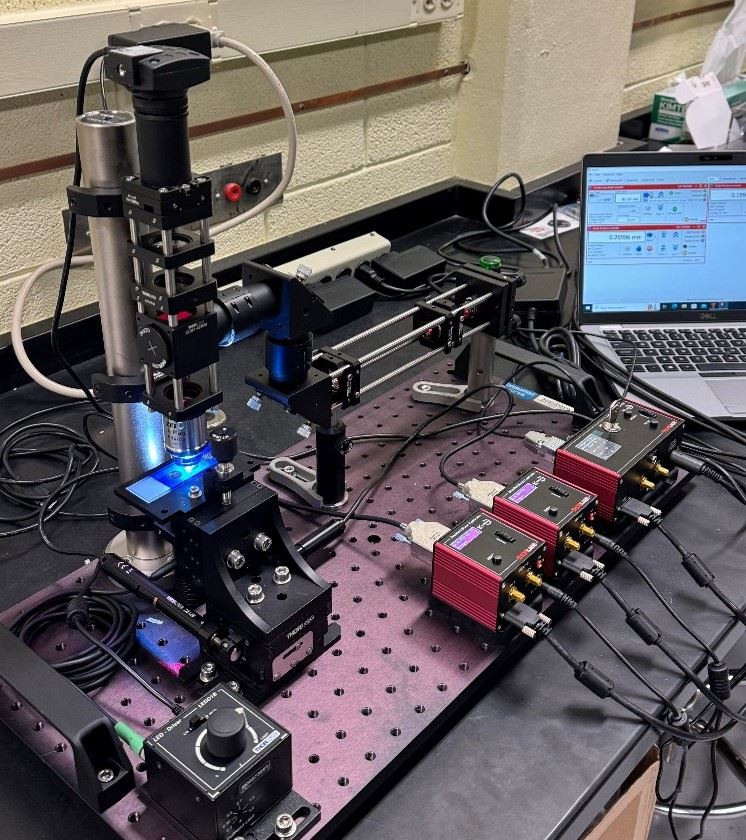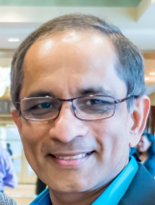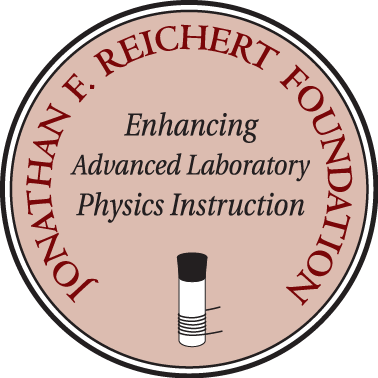- Home
- What We Do
- Laboratory Immersions
- Immersions 2024
- Imm2024UND_OpticalTweezers
 Momentum of a photon changes when it reflects or refracts at an interface. This means that the reflecting/refracting photon exerts a force, albeit a very small one, in the direction opposite to that change in momentum on the interface. If this interface is that between a micron-sized transparent bead and the liquid it is immersed in, one can use highly intense and properly focused beam of photons such as a laser to apply a very large number of those very small forces from different directions so that the bead gets trapped in place. The primary goal of the lab is to give the student a foundational experimental and theoretical knowledge of a working optical trap.
Momentum of a photon changes when it reflects or refracts at an interface. This means that the reflecting/refracting photon exerts a force, albeit a very small one, in the direction opposite to that change in momentum on the interface. If this interface is that between a micron-sized transparent bead and the liquid it is immersed in, one can use highly intense and properly focused beam of photons such as a laser to apply a very large number of those very small forces from different directions so that the bead gets trapped in place. The primary goal of the lab is to give the student a foundational experimental and theoretical knowledge of a working optical trap.
Since Sir Arthur Ashkin’s 1969 experiment creating a simple optical trap, the efficiency of these devices have improved drastically. They have found a wide range of applications from trapping single atoms purely for research purposes to a huge field of biological and medical applications including in-vitro fertilization. Sir Ashkin becoming a Nobel Laureate in Physics in 2018 "for the optical tweezers and their application to biological systems" highlights the important contribution the technique has made to advances in biological sciences.
Students learn, among other things, controlling the intensity and shape of the diode laser beam to achieve the focus and the intensity required at the plane of the sample to trap a bead. Students will become familiar with a range of optical components such as beam expanders, beam splitters, band pass filters, and a CMOS camera in conjunction with a microscope. They will also learn the art of preparing “usable” sample. Videos of 1 – 2 micron beads performing Brownian motion will be made and students will learn to trap and release selected beads using the laser tweezer. By analyzing videos of beads in Brownian motion using supplied software, student will calculate the holding force of the optical traps which turns out to be in the range of pico Newtons.Schedule:
First item on the first day will be reviewing laser safety protocols. This will be followed by a review of underlying theory and important features of the setup and procedures. During this process, we will become familiar with the components of the kit. We expect have about 30% of the system assembled by the end of first day and to have a “working” optical tweezer by lunch on the 2nd day.
During the afternoon of the 2nd day, we should be making samples, trapping and releasing beads, and making videos of our subjects.
Hopefully, we can start analyze our videos to measure holding forces of the traps during the morning of the 3rd day and conclude the workshop with a short presentation during lunch.
Participants should bring:Bringing your own laptop is encouraged.
Safety considerations:
A 658 nm class IIIB (50 mW) laser will be used in this lab. Appropriate safety glasses will be provided.
Cost estimate:
Approximate cost of the spectrometer cost and the sample kit is about $10,600. You can find details at:
https://www.thorlabs.com/newgrouppage9.cfm?objectgroup_id=6966Host and Mentor: 
Kanishka earned his B.S. in physics at the University of Colombo, Sri Lanka, and his Ph.D. in physics at the Missouri University of Science and Technology. His research interests are in the area of using neutrons and X-rays to investigate the atomic-scale structure of novel materials, crystalline, vitreous, and ceramic. He is a Professor of Physics and the Chair of the Department of Physics & Astrophysics, University of North Dakota.
Please note that the Jonathan F. Reichert Foundation has established a grant program
to help purchase apparatus used in Laboratory Immersions. Limitations
and exclusions apply, but generally speaking the Foundation may support
up to 50% of the cost of the required equipment.




